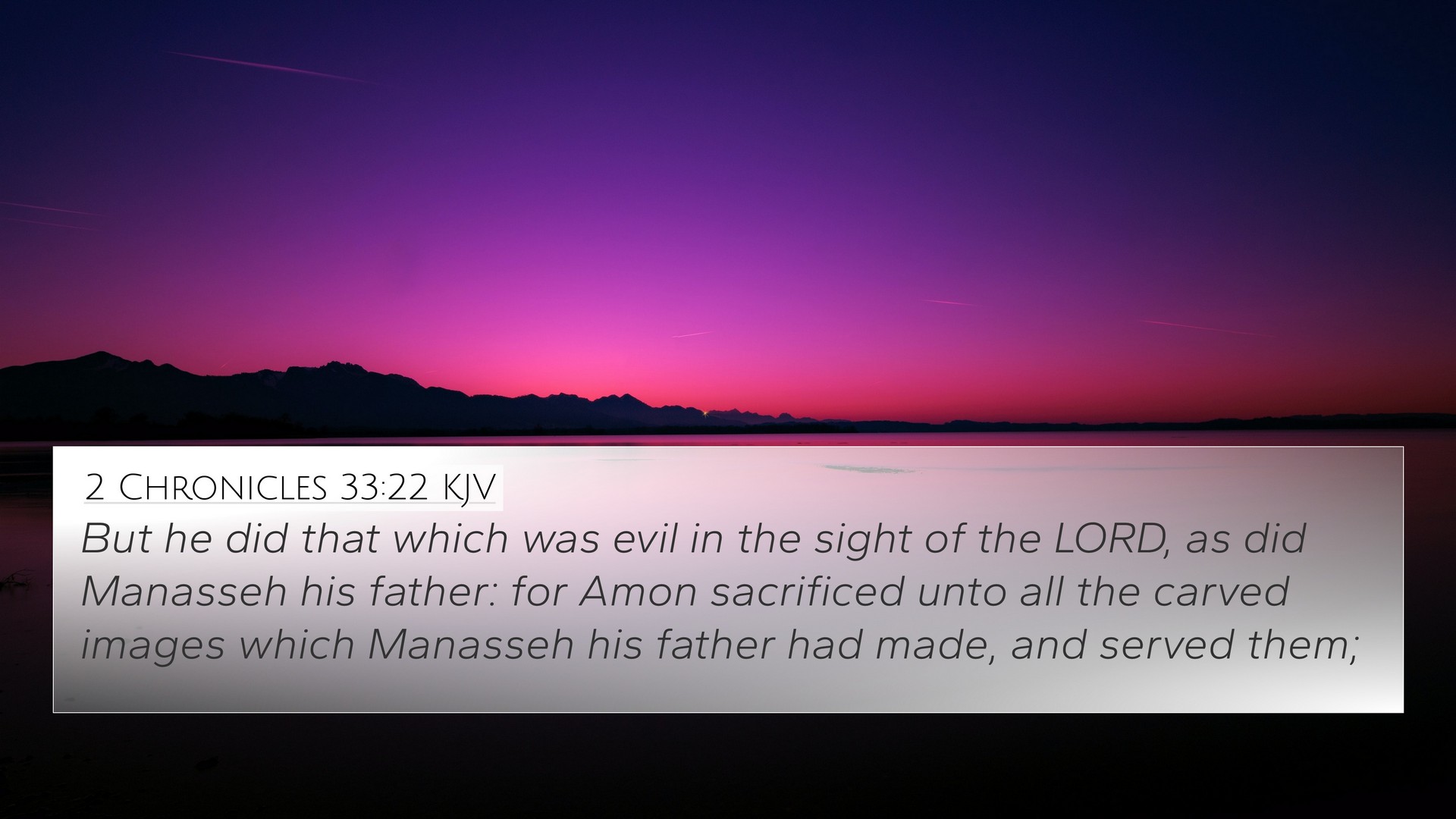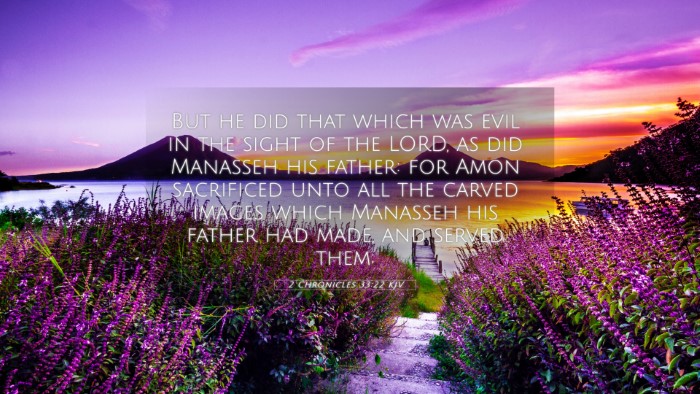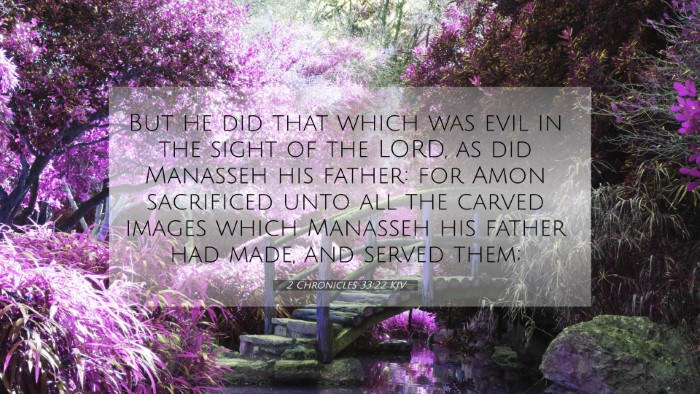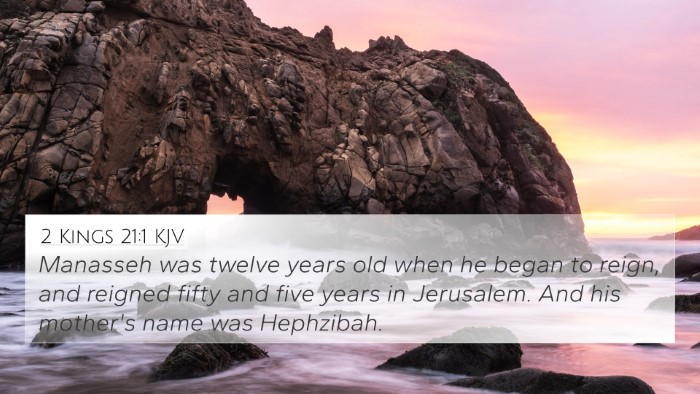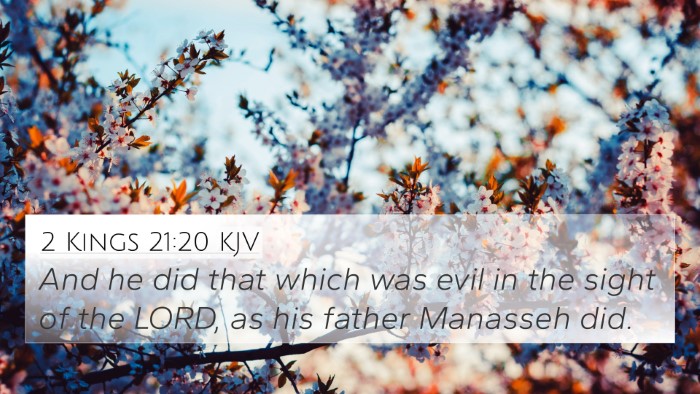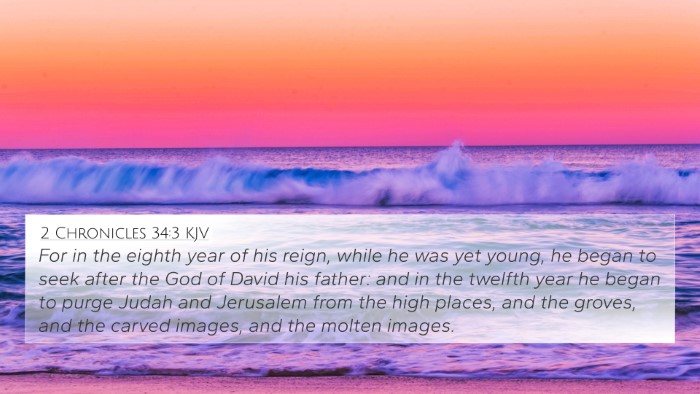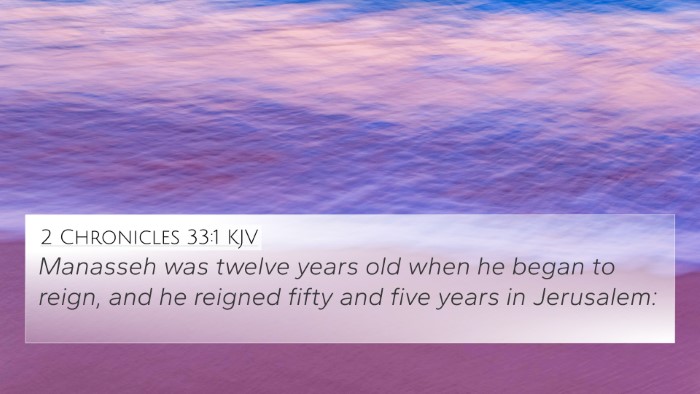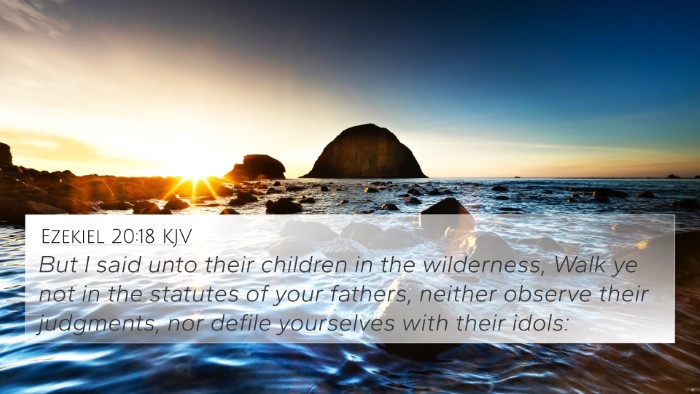Understanding 2 Chronicles 33:22
Bible Verse: 2 Chronicles 33:22 - "But he did that which was evil in the sight of the LORD, as his fathers had done: and he sacrificed unto all the carved images which Manasseh his father had made."
Overview
This verse reflects the actions of King Amon, who continues the wicked practices of his father, Manasseh. His reign is characterized by idolatry and a disregard for God's commandments. The significance of Amon's actions highlights a recurring theme in the leadership of Israel and Judah—how sin can perpetuate from one generation to the next.
Historical Context
Amon succeeded his father Manasseh, who had a notorious reign marked by extreme idolatry, including the worship of pagan gods and the even the offering of his own son as a sacrifice. This biblical context demonstrates the severe impact of parental influence on subsequent generations.
Thematic Connections
The relational theme of generational sin is prevalent throughout the scriptures.
- Exodus 20:5 - "Thou shalt not bow down thyself to them, nor serve them: for I the LORD thy God am a jealous God, visiting the iniquity of the fathers upon the children unto the third and fourth generation of them that hate me."
- Jeremiah 3:25 - "We lie down in our shame, and our confusion covereth us: for we have sinned against the LORD our God, we and our fathers."
- Ezekiel 18:30 - "Therefore I will judge you, O house of Israel, every one according to his ways, saith the Lord GOD. Repent, and turn yourselves from all your transgressions; so iniquity shall not be your ruin."
- Galatians 6:7 - "Be not deceived; God is not mocked: for whatsoever a man soweth, that shall he also reap."
- 2 Kings 21:16 - "Moreover Manasseh shed innocent blood very much, till he had filled Jerusalem from one end to another; beside his sin wherewith he made Judah to sin, in doing that which was evil in the sight of the LORD."
- Romans 1:28 - "And even as they did not like to retain God in their knowledge, God gave them over to a reprobate mind, to do those things which are not convenient."
Interpretation from Commentaries
Matthew Henry's Commentary
Henry emphasizes the consequences of Amon's evil actions, drawing a parallel to the destructive patterns set by Manasseh. He illustrates that a leader's sin can have detrimental effects on the nation, suggesting that Amon’s insistent idolatry was not only wrong but an affront to God. Henry reflects on how the worship of idols demonstrated Israel's continual struggle with faithfulness to Yahweh.
Albert Barnes' Notes
Barnes notes that Amon's scriptural portrayal as doing evil indicates a deep-rooted cultural issue among the children of Israel. He draws particular attention to the motif of 'sacrifice' made to carved images, highlighting the futility of idol worship. Barnes suggests this was a direct transgression of the commands of God that demanded worship in spirit and truth.
Adam Clarke's Commentary
Clarke elaborates on the depth of Amon's idolatry and draws connections to his potential influences. He argues that Amon may have sought approval from the neighboring kingdoms, further entrenching the sins of idolatry. Clarke encourages readers to reflect on the nature of true worship and the folly of misleading religious practices that detract from divine truth.
Cross-Referencing Biblical Texts
Exploring 2 Chronicles 33:22 through cross-references allows for a deeper understanding of the text. Here are key insights connecting this verse to broader biblical themes:
- 1 Kings 14:15 - Discusses the impact of idolatry on Israel and how God will scatter them due to their rebellion.
- Deuteronomy 5:9 - God's warning about visiting iniquity of fathers upon children if they turn to idols.
- Isaiah 57:3-4 - Proclaims the consequences of engaging in spiritual adultery and the associated sin.
- 2 Chronicles 28:1-3 - Examines another king, Ahaz, who followed similar destructive paths as Amon.
Application for Today
The legacy left by Amon serves as a grim reminder of the importance of righteous leadership and the potential for sin to be passed down through generations. Believers today are encouraged to break the cycles of sin and establish a legacy of faithfulness. Reflecting on the connections between Bible verses serves as tools for Bible cross-referencing that can illuminate God's messages across scriptures.
Bible Cross-Reference Tools
For individuals seeking an in-depth study on the connections between Bible verses, several tools can be employed:
- Bible concordance for locating specific words and their occurrences.
- Bible cross-reference guide to facilitate finding parallels.
- Cross-reference Bible study methods that outline thematic studies.
- Bible reference resources that provide insights into the context of various scriptures.
Conclusion
2 Chronicles 33:22 exemplifies the dire consequences of turning away from God and serves as a critical lesson in the study of generational sin. Through cross-referencing, individuals can better understand the interconnectedness of scriptures and the importance of maintaining a faithful walk with God.
